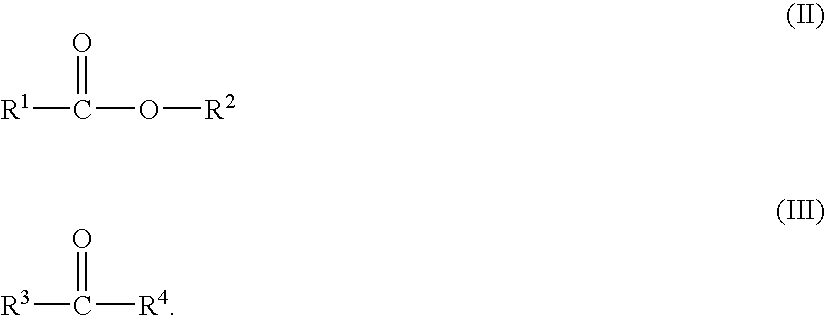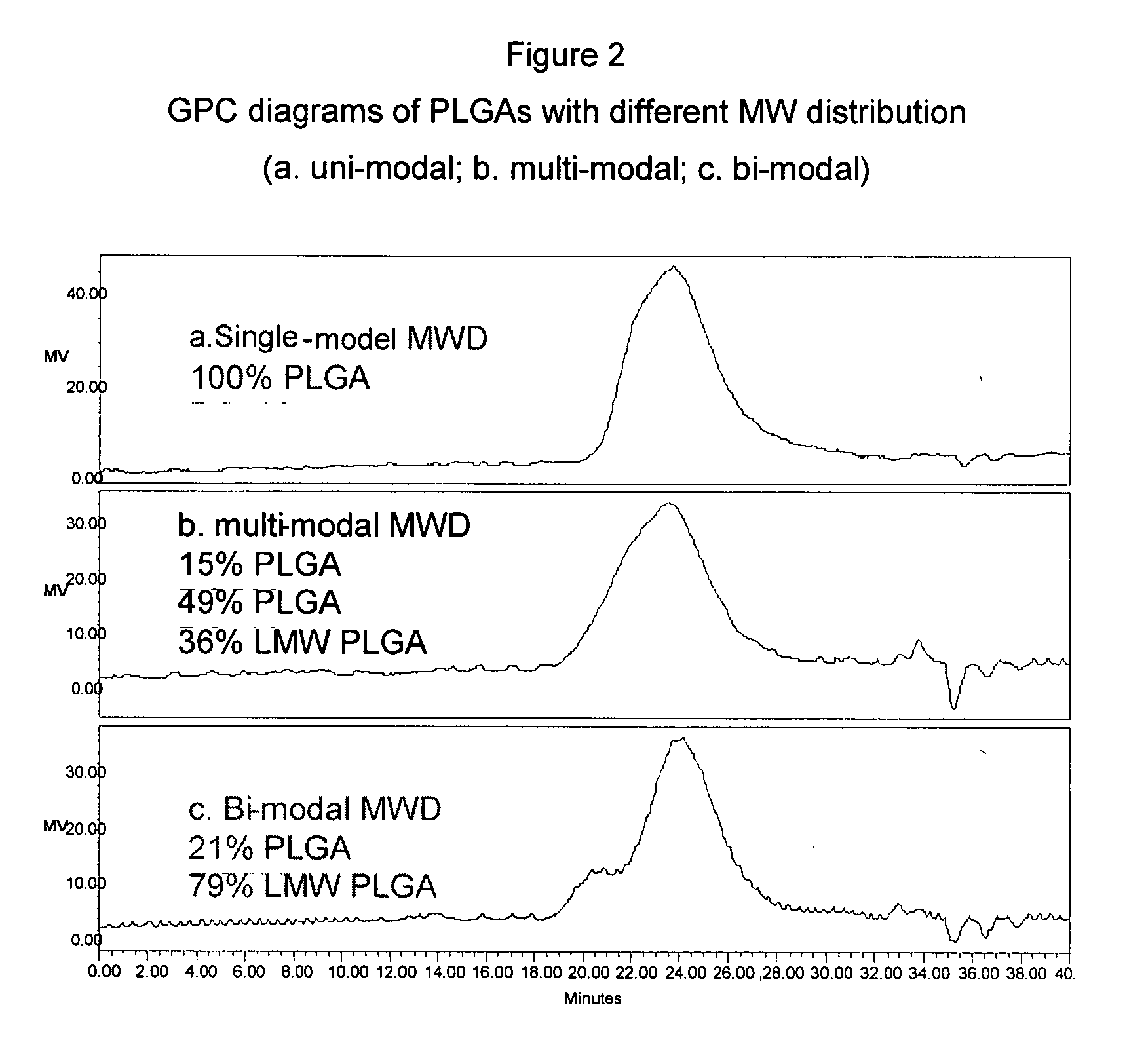Injectable multimodal polymer depot compositions and uses thereof
a multi-modal, polymer technology, applied in the direction of drug compositions, aerosol delivery, prosthesis, etc., can solve the problems of reluctance of patients to accept such an implant or drug delivery system, material not always meeting the demand for biodegradable implants, and important limitations of their use in the body of various animals, so as to reduce the loading rate of beneficial agents and reduce the loading rate. , the effect of constant release ra
- Summary
- Abstract
- Description
- Claims
- Application Information
AI Technical Summary
Benefits of technology
Problems solved by technology
Method used
Image
Examples
example 2
hGH Particle Preparation
[0183] Human growth hormone (hGH) particles (optionally containing zinc acetate) were prepared as follows:
[0184] hGH solution (5 mg / ml) solution in water (BresaGen Corporation, Adelaide, Australia) was concentrated to 10 mg / mL using a Concentration / Dialysis Selector diafiltering apparatus. The diafiltered hGH solution was washed with 5 times volume of tris or phosphate buffer solution (pH 7.6). Particles of hGH were then formed by spray drying or lyophilization using conventional techniques. Phosphate buffer solutions (5 or 50 mM) containing hGH (5 mg / mL) (and optionally various levels of zinc acetate (0 to 30 mM) when Zn complexed particles were prepared) were spray-dried using a Yamato Mini Spray dryer set at the following parameters:
2 Spray Dryer Parameter Setting Atomizing Air 2 psi Inlet Temperature 120.degree. C. Aspirator Dial 7.5 Solution Pump 2-4 Main Air Valve 40-45 psi
[0185] hGH particles having a size range between 2-100 microns were obtained. Ly...
example 3
hGH-Stearic Acid Particle Preparation
[0187] Human growth hormone (hGH) particles were prepared as follows: Lyophilized hGH (3.22 grams, Pharmacia-Upjohn, Stockholm, Sweden) and stearic acid (3.22 grams, 95% pure, Sigma-Aldrich Corporation, St. Louis, Mo.) were blended and ground. The ground material was compressed in a 13 mm round die, with a force of 10,000 pounds for 5 minutes. Compressed tablets were ground and sieved through a 70 mesh screen followed by a 400 mesh screen to obtain particles having a size range between 38-212 microns.
example 4
Bupivacaine Base Preparation
[0188] Bupivacaine hydrochloride (Sigma-Aldrich Corporation, St. Louis, Mo.) was dissolved in de-ionized (Dl) water at a concentration of 40 mg / ml (saturation). A calculated amount of sodium hydroxide (in the form of 1 N solution) was added to the solution and the pH of the final mixtures was adjusted to 10 to precipitate the Bupivacaine base. The precipitated product was filtered, and further washed with DI water for at least three times. The precipitated product was dried at ca. 40.degree. C. in vacuum for 24 h.
PUM
| Property | Measurement | Unit |
|---|---|---|
| Temperature | aaaaa | aaaaa |
| Fraction | aaaaa | aaaaa |
| Fraction | aaaaa | aaaaa |
Abstract
Description
Claims
Application Information
 Login to View More
Login to View More - R&D
- Intellectual Property
- Life Sciences
- Materials
- Tech Scout
- Unparalleled Data Quality
- Higher Quality Content
- 60% Fewer Hallucinations
Browse by: Latest US Patents, China's latest patents, Technical Efficacy Thesaurus, Application Domain, Technology Topic, Popular Technical Reports.
© 2025 PatSnap. All rights reserved.Legal|Privacy policy|Modern Slavery Act Transparency Statement|Sitemap|About US| Contact US: help@patsnap.com



